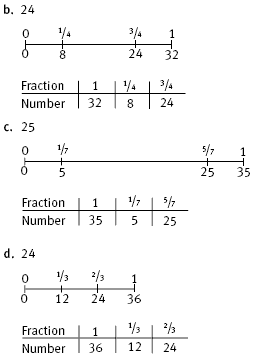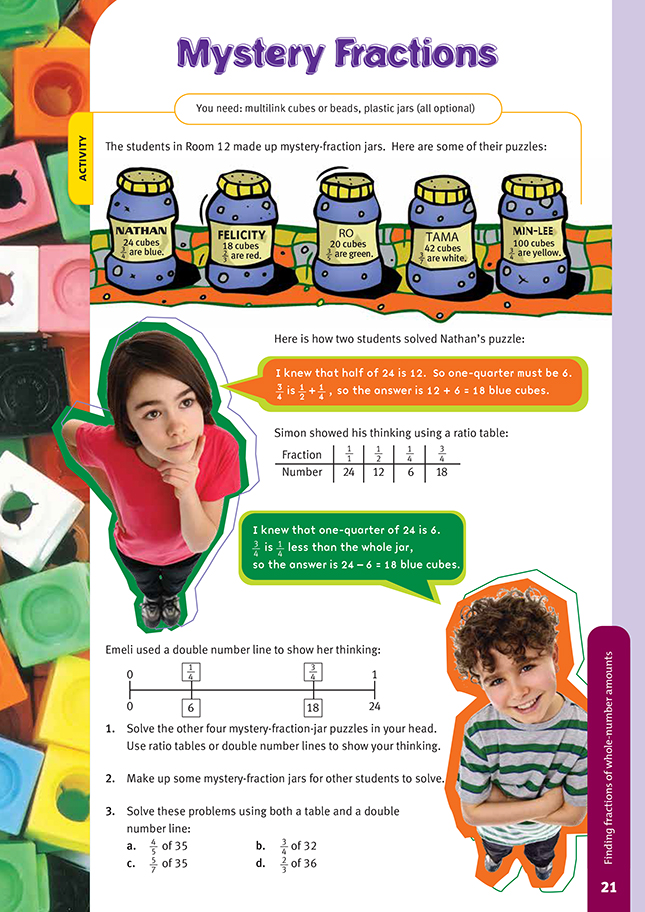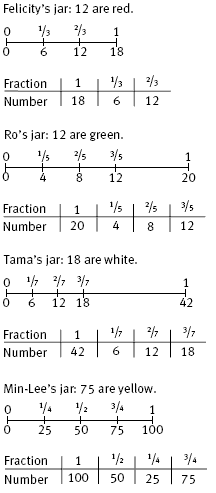This is a level 3 number link activity from the Figure It Out series. It relates to Stage 6 of the Number Framework.
A PDF of the student activity is included.
Click on the image to enlarge it. Click again to close. Download PDF (239 KB)
find fractions of a whole
FIO, Link, Number, Book Two, Mystery Fractions, page 21
Multilink cubes or beads, plastic jars (all optional)
This activity examines the use of a ratio table or double number line as a tool to find the fractional amounts of a set. The students need to recognise the “whole” to which the fractions refer. The whole in this case is the total number of cubes in the jar, not the jar itself.
Some students may find fractions with a numerator greater than 1 difficult to handle. This is usually because they do not fully understand the meaning of the fractional notation. Check that the students do understand 3/4 as three lots of one-quarter and 3/5 as three lots of one-fifth.
Observe how the students attempt the problem. Look to see if they know to share equally by the number indicated in the denominator. For example, 2/3 will involve equal sharing by 3. If they can make equal shares, do they then use the numerator to decide how many equal shares to consider? Some students may use addition to find the complete fraction while others use multiplication. Have the students share their strategies.
Notice the ratio table device used by Simon. This is an excellent tool for developing proportional thinking in students. This ratio table does not use distance to show the relationships, as the double number line does; it is simply a number table.
Answers to Activity
1.
2. Answers will vary.
3.
.gif)


